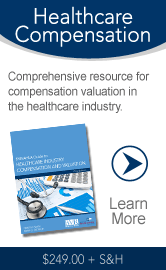 |
 |
Issue #9-1 | February 7, 2013

How hospitals plan to boost value in 2013Two key drivers of organizational value are costs and growth. The more cost-efficient an organization is, the healthier the earnings and resultant value. And, generally, higher growth equals higher value. A new survey reveals where top healthcare executives and clinical leaders see the most potential to attack costs and spur growth. Cost controls: In the face of changing reimbursements, lowering costs will take on increased importance. The top three areas that respondents expect to focus on in the upcoming year to reduce costs are: process improvement (cited by 80% of respondents), labor efficiencies (62%), and supply chain efficiencies (57%). To improve processes, a number of organizations are looking to “lean” programs (such as Toyota Lean) that seek to eliminate waste by implementing processes to optimize resources, assets, and productivity while improving quality. In terms of specific measures, the top five tactics will be: reduced travel (43%), a change in employee health insurance plans (39%), a hiring freeze (26%), reduced hours (25%), and a pay freeze (24%). Growth areas: To fuel financial growth, the top five actions healthcare providers will take will be: expand outpatient services (57%), start or increase promising business or facilities (43%), launch a strategic marketing campaign for an existing market (43%), enter into joint ventures (41%), and acquire physician practices (38%). These top growth areas reflect the ongoing trend of moving acute care services beyond the walls of the hospital. This is important as providers look more to accountable care organizations (ACOs) to reduce costs, improve profitability, and increase the quality of care. Watch out: We must point out that hospitals need to assess the risks involved when looking at growth opportunities. Not all growth is good growth. Is there a demand for the new service or facility? How much capital will be involved? Will the volume materialize to make it profitable? Of course, these are basic questions, but it is easy to lose sight of them when scrambling to expand. The 2013 Industry Survey: Strategic Imperatives for an Evolving Industry was conducted by the HealthLeaders Media Intelligence Unit and includes responses from 823 senior executives and clinical leaders from a variety of healthcare provider organizations. Hospitals now face stiffer HIPAA penaltiesHealthcare providers will be hit with much higher penalties for HIPAA privacy violations, courtesy of a final rule released January 17 by the U.S. Department of Health and Human Services. The HIPAA enforcement final rule, which was part of an omnibus HIPAA rule, raises the cap on annual civil monetary penalties for HIPAA violations from $25,000 to $1.5 million. Four categories: The new rule also creates four new categories for imposing penalties. Providers will fall into these categories depending on whether they: (1) did not know about any HIPAA violations; (2) had HIPAA violations due to reasonable causes; (3) had HIPAA violations due to willful neglect, but took timely steps to remedy their violations; and (4) had HIPAA violations due to willful neglect, but did not take timely steps to remedy the violations. Penalties will vary by category, with the lowest penalties (no less than $100 and no more than $50,000 per violation) imposed on providers who did not know about any violations. At the high end of the scale, penalties will be no less than $50,000 per violation. What to do: Check the effectiveness of your privacy and security compliance programs. If they’re in good shape, there’s little need to worry about these higher penalties. Key factors that influence the value of an imaging centerAs hospitals expand outpatient services and gobble up physician practices, diagnostic imaging centers will often be a target for acquisition. The trouble is, pegging the value of an imaging center is difficult because of the complex nature of the business. Even business valuation experts have a tough time coming up with the magic number. Focus on revenue: The main point of contention in the valuation of an imaging center is the revenue forecast, as opposed to the expense picture, according to Douglas G. Smith, an expert in imaging who also consults on valuation issues as managing partner of Integrated Medical Services LLC. “An imaging center is capital-intensive, so it is a high-fixed-cost entity with very little variable costs, so you really need to understand that,” he said during a recent BVR webinar. Therefore, revenue elements are key to value, and several important factors influence the revenue streams. Payment breakdown. Imaging services are billed to third-party payers who typically reimburse with a “global” payment, which consists of: (1) a professional component, which is for the physician’s analysis; and (2) a technical component for equipment and staff. The technical component is the principal source of net revenue, so examine it closely. “If you see changes, it can either indicate substantial value there or maintenance of value, or it can be an absolute indication that there is impending financial death,” says Smith. Modality: Imaging centers have different services with different reimbursements, so the mix of services needs to be examined. You could see volume going up but revenue dropping because the mix is changing from, say, CTs and MRIs to plain film ultrasounds, notes Smith. Also, a full-service facility is worth more than a single modality center, which—in today’s market—is worth very little beyond net asset value. Payer mix: Who the payers are—commercial, government, or self-payers— greatly affects revenue. For example, an imaging center’s revenue can plummet if the percentage volume of Medicare and Medicaid patients increases. A new facility may have opened up with better service that lured away the more lucrative patients. Smith advises that you examine a CPT Frequency Report by Payer for the current and past two years. Environmental: This, of course, involves many issues of supply, demand, competition, and regulatory matters. “You need to know the local landscape and make sure it is taken into account in the revenue forecasts,” says Smith. Are more specialist physicians coming into the area who will want imaging services? Are any of them leaving the area? What are the area’s population metrics? Do they support or deny the growth assumptions in the revenue forecast? Are other hospitals establishing alternative sites of service? Are certain medical specialties installing their own imaging departments instead of referring patients elsewhere? Are any big employers leaving the area—or changing insurance carriers or covered services? Have certain tightly managed third-party payers come into the area and pushed out the more liberal payers? The issue of referrals is also crucial, Smith points out. Are hospitals hiring physicians who were otherwise referrers to the facility—and those referrals will now vanish? “I have seen that happen repeatedly over the last year and a half,” says Smith. He advises that you look at a list of the top 25 referrers going back three years and see what names are not coming back. You also need to understand current and planned regulatory and payment trends. Are there any changes that will affect the performance of the entity depending on its sites of service, structure, and modalities? For example, in 2011, CMS created new CT codes resulting in a material reduction in payment for CT abdomen/pelvis studies. Final point: “Dig into the details,” Smith advises. Diagnostic imaging centers operate in a dynamic universe and must be treated very differently from other kinds of entities, he says. Make sure there are good data to back up reasonable and supportable assumptions as to value. Busy 2012 for healthcare M&A points to growth areasThe number of healthcare M&A deals shot up in 2012, with some sectors showing record activity, reveals a new report, which also forecasts activity for 2013. The year 2012 saw 1,063 deals, up 6% from 2011’s 1,004, according to the Health Care M&A Report from Irving Levin Associates Inc. However, dollar volume was $143.3 billion in 2012, down 38% from 2011. This is an indication of more strategic deals, as opposed to a scattershot approach, says the report. High growth sectors: M&As were strong for physician medical groups, home healthcare and hospice, and behavioral healthcare. The dollar volume of M&As for physician medical groups jumped 846%, to $4.4 billion in 2012, although deal volume fell 37%. The report cites the ongoing buying spree by hospitals as they seek to better control costs in newly formed accountable care organizations and “lock in” physician referrals to their own facilities. The home health and hospice sector recorded substantial growth, with increases in both deal and dollar volume, at 21% and 1,872% ($5.7 billion in 2012 versus $289 million in 2011), respectively. The report points out that this sector is poised for even higher growth because more baby boomers will need home healthcare services. Behavioral healthcare volume also rose 231% in dollar volume and 31% in deal volume, compared to 2011. “This usually quiet sector may see a lot more activity in the future, now that mental health issues have gained national attention and addiction has lost much of its stigma,” predicts the report. “Health care M&A activity will stay strong through 2013 as the services sector, particularly, looks forward to welcoming many more insured patients once the Affordable Care Act fully takes effect on January 1, 2014,” said Lisa E. Phillips, editor of the report. |
|
||||||
1000 SW Broadway, Suite 1200, Portland, OR 97205
(503) 291-7963 | editor@bvhealthcarenews.com
www.BVResources.com/healthcare

